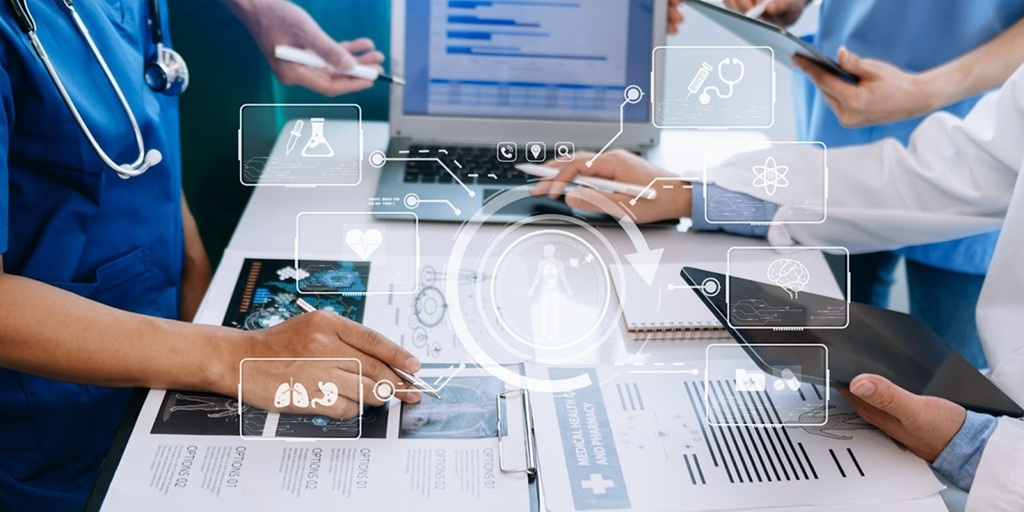The World Economic Forum (WEF) recently released their flagship report on the Top 10 Emerging Technologies of 2023. Encompassing findings and opinions from a variety of academics, industry leaders, and futurists, this report provides a snapshot of what types of technology are going to have an impact on the world’s industries. In this two-part story, Xeraya summarizes what these ten types of technology are, and how some of them will also be shaping the future of healthcare.
Here is Part 2 of our story:
Technology 6 – Wearable Plant Sensors
How much food will it take to feed the world? According to the World Resources Institute, there is a big shortfall today between the amount of food being produced and the amount we will need to feed people in 2050. It is estimated that the earth’s population will reach almost 10 billion by that year, and as incomes go up, people will increasingly seek resource-intensive and animal-based foods. Simultaneously, we also have the urgent issue of having to cut GHG emissions from agricultural production and to stop the razing of forests to make way for farmland.

In the context of this emerging technology, wearable plant sensors can help to address the first issue of food production, by enabling farmers to monitor the health and quality of their crops. Traditionally, crops were observed via soil testing and visual inspection; both methods are expensive and time-consuming for farmers.
As time has progressed, technological advancements, such as the emergence sensor-equipped drones and tractors which are able to provide them with high-resolution information about crop conditions. With these methods, the next step would be to use AI to collate this data and process it so that the information can be used to foster better management of crops in the future.
Additionally, there is the question of monitoring individual plants, a practice which would yield a better harvest all around. In this aspect, scientists have begun exploring the idea of wearable tech for plants – small, non-invasive devices – that attach to a plant and monitor vital clues to their health, including temperature, humidity, as well as moisture and nutrient levels. The data collected by these wearables, aside from optimizing the growth cycle of these plants, can also help farmers to reduce water, fertilizer, and pesticide usage, and pick up on any potential signs of disease at a very early stage. The information is transmitted wirelessly to computers and mobile devices and are then analysed for insights.
For farmers, this means being able to know what’s happening with a certain plant in real-time; they can take action based on the specific demands of the plant, adjusting irrigation and fertilizer application, thanks to the moisture levels and nutrients data. While this emerging technology is undoubtedly expensive to implement as of right now, there is hope that with the support of more organizations it can be developed to be both cost-efficient and essential for the future of the world’s agricultural industry.
Technology 7 – Spatial Omics
For centuries, physicians, scientists, and researchers have strived to learn more about the body and how it functions. Various technologies, such as DNA analysis and sequencing have helped us further our understanding of what keeps us alive and healthy, but with the introduction of spatial omics, this particular area of medical research has been given a huge boost.
Essentially, spatial omics is a combination of advanced imaging techniques and DNA sequencing which helps to map on a molecular level the “what, when, and where” of biological processes. A specific organ is sliced into sections with the thickness of one cell, and then the imaging comes into play, visualising the locations of particular biomolecules. Scientists are subsequently able to observe cell architecture and view unprecedented events in greater detail. This technology has thus paved a way for us to develop cell atlases.
Another area of medical science that spatial omics has been proven useful is in therapeutic discovery; this technology can identify neurons that are geared for recovery; when scientists stimulate these neurons, the healing process is sped up. On a practical level, spatial omics can also help to characterise cell types in tumours so that treatments can be customised; unravel the mechanisms of complex diseases; and allow researchers to dive deeper in their studies of infectious diseases.
This emerging technology is certainly gaining traction, with both public and private companies entering this space; key drivers of its development include a rise in cancer cases: the American Cancer Society, for instance, has predicted that over. 1.9 million new cancer cases and 609.8 cancer deaths will occur in 2023. Spatial omics can help by generating accurate spatial coordinates of cellular and molecular profiles. Additionally, COVID-19, a pandemic that has been the catalyst for so many new technologies, has fostered a demand for safe and effective therapeutics. Scientists are using spatial omics to observe how infected cells from multiple organs exhibit a range of molecular or genomic changes.

The market size for spatial omics is thus projected to grow at a rapid pace: according to Coherent Market Insights, it was valued at $267 million in 2022, and will be worth $547 million by 2030, increasing at a CAGR of 9.4%.
Technology 8 – Brain-machine Interfaces (BMIs)
As a technology that has gained visibility over the last few years, BMIs are proving the potential for us to control machines with our thoughts; these devices allow electrical signals from the brain to be capture by sensor hardware. These signals are then decoded by algorithms, which form instructions for computers. At present, they are being used to treat epilepsy, and in neuro-prosthetics with electrodes being used to interface with the nervous system. According to an article on Science Direct, the list of neurological functions that BMIs can support is ever expanding, including a wide range of neurologic and psychiatric disorders; BMIs have received approved indications for deep brain stimulation (DBS) in Parkinson’s, essential tremors, dystonia, and obsessive-compulsive disorder, and has emerging indications in neurocognitive disorders, and pain.
However, today’s BMI devices have a long road ahead. Implants that are available in the market today have been proven to cause long-term scarring and discomfort in patients; as outlined in research published by the National Library of Medicine, the insertion of these devices into cortical tissue is an invasive procedure which introduces a possible pathway for infection. Implantation can also lead to small-scale tissue damage, and glial scarring occurs at the insertion site. The micro-motions or “drifting” of these BMI implants can also form scars, which can lead to a decrease in the quality of recordings over time. While the option of a non-invasive BMI such as electrodes applied outside of the skull is available, the signals received tend to be muffled, thus making it hard to decode them.
Enter the solution: brain interfacing circuits that are bio-compatible as well as soft and flexible. These circuits conform to the brain, reducing scarring and sensor drift, and are also packed with enough sensors to stimulate millions of brain cells at once. For neuroscientists, this technology can help them to understand the workings and processes of conditions such as dementia and autism, while in the clinic, flexible BMIs can provide greater control over neuro-prosthetics without the need for frequent calibration.
To date, the FDA has already approved clinical trials for specific flexible BMIs, and there is evidence to suggest that the technology being used to create these devices could also work for pacemakers. The advances being made in the manufacturing of materials and soft-circuit printing will also further its progress, which can then lead to true human-AI interfacing.
Technology 9 – Sustainable Computing
When we think of the current climate crisis, we don’t usually connect cloud computing and data centres to it; however, the fact of the matter is that these machines which power our daily work do indeed have an impact on the environment. As per the C&C Technology Group, data centres require energy to maintain their servers, consuming about 1,000 kWh per square metre. This is equivalent to about ten times the power consumption of the average home. In terms of equipment, server racks at data centres require a lot of energy to maintain and cool down their components.
While there is no one solution to reducing the energy these centres take up, the next decade should see advancements in technology that can help further the goal of a net-zero-energy data centre. Developments such as liquid cooling systems that use water and dielectric coolant can help dissipate heat, and this excess heat can then be used for space and water heating as well as industrial processes. AI also has a role to play, as it is being used to analyse and optimise energy use by data centres in real-time so that its operations run efficiently without compromising on performance.
As we strive to make the infrastructure supporting these data centres more energy-efficient and environmentally friendly, other innovations, such as the idea of having an entire system on a chip and energy-proportional computing (which allows computers to only use the energy required proportional to the amount of work that needs to be done) are also gaining in traction.

Technology 10 – AI-facilitated Healthcare
While the use of technology in healthcare is a broad topic that has been covered numerous times, the utilisation of AI for medical operations is something that truly merits a second look. The pandemic – aside from causing widespread change in various industries globally – has exposed the shortcomings of the world’s healthcare systems.
These shortcomings involve not only the archaic technology and manual-driven methods most hospitals and facilities deal with on a daily basis; they also include the issue of a shortage of workers in the industry, which then snowballs to rapidly rising workloads which are difficult to tackle.
As such, governments and academic institutions alike have turned to AI and machine learning (ML) to address these problems. If we are to face another pandemic, how do we meet the challenge head-on and continue to have a functioning healthcare system that can handle the workload? The answer is to integrate quality data into AI and ML models.

These models can help us reduce the long delays patients currently face when seeking medical care, delays which often come from uneven access and the underutilisation of facilities. In the UK for instance, a survey by the Office for National Statistics revealed that one in five UK adults were waiting for an appointment, test, or treatment at an NHS hospital, with 36% of the survey respondents stating that this waiting had made their condition worsen. By using AI and ML as well as data analytics, we can apply a curated dataset to existing facilities and improve access to treatments.
In developing nations, the advent of AI-integrated healthcare could have even more of an impact, because these nations have a lack of infrastructure and personnel to deliver healthcare services to their people. Intelligent AI and ML tools that can help identify illnesses, monitor, and recommend treatment for new and ongoing conditions serve as the first step to leveraging these technologies for the betterment of these healthcare systems.
This concludes our story on the emerging technologies of 2023. Which one do you think has the most potential to transform the healthcare system, and which of these innovations are you the most excited about? Leave us a comment below.
Sources:
- World Economic Forum – Top 10 Emerging Technologies of 2023
- World Resources Institute – How to Sustainably Feed 10 Billion People by 2050, in 21 Charts.
- Coherent Market Insights – Global Spatial OMICS Market to Reach $547 Million by 2030.
- ScienceDirect – Brain-Machine Interfaces: The Role of the Neurosurgeon.
- National Library of Medicine – Current Challenges Facing the Translation of Brain Computer Interfaces.
- C&C Technology Group – Understanding Data Center Energy Consumption.
- The Guardian – One in eight UK adults using private medical care due to NHS delays.




